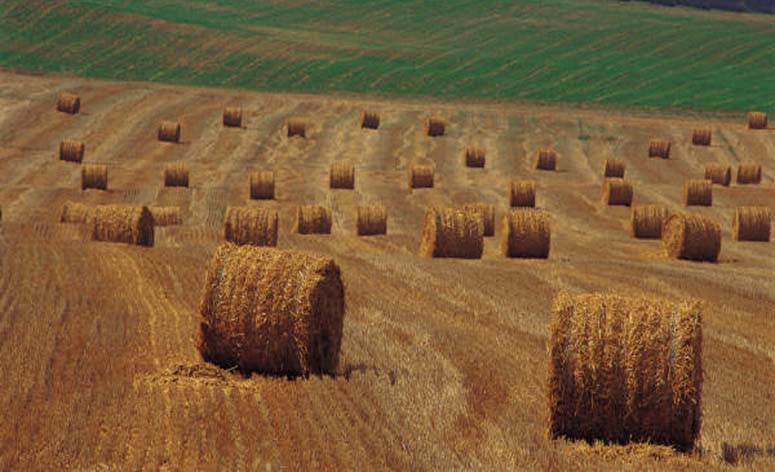
Agricultural News
New Crop Insurance Option Protects Forage Producers
Wed, 01 Apr 2015 11:38:13 CDT
 Written By Jon Biermacher, Josh Maples and B. Wade Brorsen
Written By Jon Biermacher, Josh Maples and B. Wade Brorsen
The U.S. Department of Agriculture (USDA) established the Rainfall Index Annual Forage Plan (RIAFP) in May 2013. The program offers castrophic risk (CAT) and/or buy-up coverage (BC) to producers who annually plant crops used for livestock feed or fodder, including grasses and mixed forages such as ryegrass and sorghum-sudangrass, and small grains like wheat, rye and oats. The forage insurance program relies on a rainfall index that is calculated using weather data collected by the National Oceanic and Atmospheric Administration and is designed to insure against declines in the index in each 0.25 degree latitude by 0.25 degree longitude grid. Premiums for CAT are subsidized 100 percent by USDA. Plus, producers have the option to purchase subsidized BC coverage for which they are required to pay only a portion of the premium.
Participation in RIAFP requires producers to make a series of choices that influence their premium cost and coverage level. First, the producer must choose the growing season. Growing Season 1 means the crop is planted between July 15 and Dec. 15 and has available index intervals from September through March. Growing Season 2 means the crop is planted from between Dec. 15 and July 15 with available index intervals from March through September. Producers can double crop and receive indemnities for two growing seasons within a year if they can prove they have double cropped for the past two years.
Additional choices that a producer must make include: 1) the value per acre of their forage production, which is accomplished by choosing a productivity factor to adjust the producer's respective county base value provided by the USDA for each county within the participating states, 2) the coverage level (trigger index level) and 3) which rainfall indices to use in terms of months and the percent of value to alloCATe to these indices. These choices are used to determine the cost of the producer's BC premium, the value of a potential indemnity payoff, and the value of the subsidy that the producer receives. For example, if the actuarially fair premium total cost is $2.16 for $21.60 of coverage per acre, the Federal Crop Insurance Corporation pays a 51 percent subsidy so the producer only pays $1.06 per acre for the insurance. In general, higher productivity factors and coverage levels lead to higher premiums, higher potential indemnity payoffs and lower subsidy levels in terms of percent of premiums.
Research using long-term forage experiments at the Noble Foundation found little correlation between the rainfall index and ryegrass forage yields, so the RIAFP may not do much to reduce risk. However, because the insurance premiums are highly subsidized, profit-maximizing producers are encouraged to sign up for the program at the maximum levels allowed, as long as this does not affect their eligibility for other programs. In particular, producers should be aware that CAT coverage is not available if the forage is intended for grazing purposes. That is, it is not possible to enroll in CAT coverage through the RIAFP and enroll for coverage in the Livestock Forage Disaster Program (LFDP). Therefore, only acres planted for hay production can get the 100 percent subsidized CAT coverage offered by the RIAFP. Forage planted for grazing can be protected with BC insurance, but the producer is required to pay a portion of the premium. Forage producers are eligible to sign up for BC with the RIAFP while also signing up for coverage through LFDP. Moreover, wheat produced for grain (even if grazed) does not qualify for crop yield protection if those acres have been insured through RIAFP.
Producers interested in learning more about the details of this forage insurance program are encouraged to contact their crop insurance agent or read about the program online. In addition, an online decision tool has been developed to aid producers with the choices involved with this program.
Please note that producers who are interested in the program need to sign up for the program by July 15 for crops planted in the fall of 2015, and Dec. 15 for crops planted next spring (spring of 2016).
WebReadyTM Powered by WireReady® NSI
Top Agricultural News
More Headlines...




















